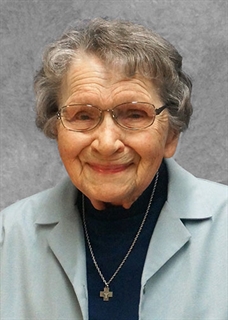
I met the School Sisters of St. Francis at Holy Trinity School in Winsted, Minnesota. At age 12, I believed God was calling me to be a sister, and when my dad became ill, I promised God I would enter the convent if he recovered. I entered and was received into the community as a novice in 1938.
My first years on mission I was a homemaker, and then I had a desire to teach. Before I could begin classes at Alverno College, I was sent to Holy Angels School in Chicago as a second-grade teacher. I took courses toward my degree on Saturdays and during summer school at Alverno.
When the community asked for volunteers to work among the poor in Latin America, I joyfully responded. I went to Costa Rica to teach at St. Clare College, a girls’ high school. Two years later, I became a formation director for ULAF.
In 1968, the ULAF provincial team asked Sister Marie Zimmerman and me to start a catechizing mission in Montero, Peru. It was exciting to see how eager the people were to learn and acquire new knowledge in their faith. Some years later, the bishop asked me to move to Canchaque to start a formation program for young adults, training them in catechetics so they could return to their parishes as catechists.
I was there for five years before joining the pastoral team in Paita, arriving in the year of El Niño. What a terrible time for the people! The mother of a family I visited was caring for her aged father; she shared with me the anxiety of each day, of each moment: thunder, lightning, and torrential rains. Water was everywhere. The sound of people shoveling water from their homes was very common.
I was in Paita for nine years, ministering to the sick and dying and preparing adults for the sacraments. In February 1991, Paita was hit hard with cholera. By the end of April, the death toll was over 1,000 and climbing due to inadequate medical care and supplies. This was another cross for the poor.
One morning, while praying on the roof of our convent, we saw three church steeples pointed heavenward, symbolic of hope, new life, and resurrection. We were challenged to make that a reality through our prayers and sacrifices.
During my last years of service in Latin America, I was the formation director for the Peruvian postulants in Costa Rica. When I left Paita, the youth group surprised me with a poem. One of the verses captures my ministry in Paita:
Thousands of sick found comfort in God, since always to their beds, you brought the words of love that you proclaimed, and the God made bread that you gave. The thirst for God you satisfied in the depths of their hearts, so they encountered pardon and mercy from God the Father.
Returning to Milwaukee, I helped Hispanics in the neighborhood with their social needs and learning English. Throughout my life I came to know, love, and appreciate other cultures and at the same time recognized in a deeper sense the beauty of my own culture.
<< Back to Jubilarian list